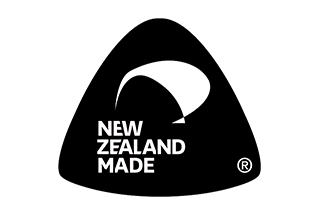Reaching an export market is closer to home than many New Zealand food and beverage producers might imagine. While businesses invest significant amounts of time and resources to directly grow our market share abroad, could another way to access those lucrative export markets be to double down our efforts to introduce food and beverage products to tourists in New Zealand?
Tourists are looking for your produce back home
A recent industry insights report suggests there is compelling evidence for this:
“60% of international travellers will seek out products from the country they visited when they return home.”
New Zealand’s ‘Brand Runners’
Let’s call these New Zealand tourists ‘brand runners’. They explore far beyond their own borders and on return to their home country, begin to integrate these new experiences into their life. How many ‘brand runners’ might there be that New Zealand’s food and beverage producers might be able to target?
If you’re exporting to China there were 343,648 potential brand runners that visited in 2018. There were 229,000 potential brand runners who returned to the US at the end of the New Zealand travels and there were 103,000 Brits who might be able to return with a new found desire to find your protect on the shelves of UK supermarkets and specialty stores.
If 60% of New Zealand tourists could help run your brand back to their home country, how many might you be able to introduce to your product in their three to four week stay here?
Provenance Marketing Recommendation
Food and beverage producers should have a provenance marketing strategy that starts on the shelves and menus of New Zealand’s supermarkets, specialty stores, restaurants and cafes. Those provenance marketing activities should include:
Label your products as New Zealand Made even if they’re destined for a domestic market only. The New Zealand Made Kiwi trademark is already recognised by 87% of Kiwis and tourists value authenticity highest in their experience of food.
Adopt the same New Zealand Made logo for products destined for export markets. Keep the consistency between markets to ensure no confusion once brand runners return home.
Ensure your produce is available at New Zealand supermarkets near the highest volume tourist activity. Prioritise getting shelf space at Fresh Choice Supermarket Queenstown, Raeward Fresh and Pak N Save Queenstown for example.
Ensure your produce and beverages are on the menus of restaurants and cafes in the tourist hotspots around New Zealand.
Of course it’s not just tourists that will see where your product is made. There are 4.93 million Kiwis to introduce to what your growing and making here.
Chinese ‘brand runners’ love what we grow
While us Kiwis get to take much of our natural environment for granted, including what we grow, Chinese ‘brand runners’ are specifically seeking out organic or naturally grown ingredients. In restaurants for example, the items in the recipes may be as important as the menu.
Kiwi Red & Blue Tastes Better in China
For produce labelling, the classic red and blue New Zealand Made Kiwi trademark does particularly well thanks to the colour semiotics. Red symbolises luck, happiness and joy in Chinese Culture. Blue symbolises immortality and advancement.
Buy New Zealand Made sees a preference by New Zealand food producers for the red and blue Kiwi trademark ahead of the contemporary black and white logo for use on products destined for China. More on colour semiotics.
Some numbers worth remembering
43% of total exports are in food and beverage. $29 bn pa.
Tourism is worth $13.8bn.
New Zealand’s population is 4.93 million.
The combined tourism and food and beverage exports delivered 62% of New Zealand’s export earnings in 2017.
New Zealand’s food and beverage experience currently ranks second lowest amongst all categories covered by visitor satisfaction surveys.
Provenance Marketing Pays A Premium
Making a little more than market rate is possible for New Zealand food and beverage producers. These numbers were highlighted last year by Katherine Rich, CEO Food & Grocery Council.
“They highlight that authentic and natural products built on a strong ‘Brand NZ’ are attracting significant price premiums over the average world price in nearly all the growth categories. For example, honey achieves 707% over the world price, fluid milk/cream 145%, fresh cheese 139%, innovative foods 130%, retail infant formula 126%.” Katherine Rich, CEO Food & Grocery Council.
Summary Questions
What could you do to introduce your produce to New Zealand’s tourists in 2019?
What products are New Zealand tourists most likely to buy both here and in the export markets you wish to grow?
What are your provenance marketing gaps on products, in the retail environment and online?
Most New Zealand food and beverage producers qualify for the $250+gst per annum licence to use the Kiwi trademark on their products.
Find out if your business qualifies here
Apply for a licence to use the New Zealand Made Kiwi Trademark.
Read the next story Provenance Marketing and why the word ‘made’ matters.


